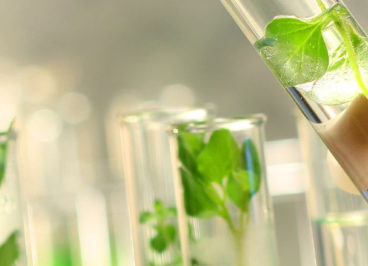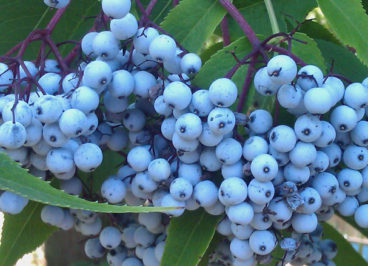GE: Herbicide Resistance, NO Increased Yields & Inconclusive Environmental Effects
Recently, we discussed GE for the trait of pest resistance with the case example of Bt toxin. Now, we are going to explore crops that are GE with herbicide resistance traits. These GMOs are designed to survive exposure to herbicides that would normally be fatal.
The goal of GE herbicide resistant crops is to increase yield via enhanced weed control. [1] The goal is to kill all plants except the GE crop, and to prevent casualties of the intentional GE crop thanks to its forced-in herbicide resistance.
One would hope that herbicide use may decrease as a result of GE crops. Not so. While herbicide levels initially decreased with the adoption of the GE crops, these decreases have not been sustained. [2] In other words, farmers still depend on copious amounts of chemical weed killers.
Moreover, the way corporate scientists report herbicide use is sneaky: they simply report kilograms per hectare per year without factoring in the differences in toxicity amongst the various chemicals used. It sounds like lying by omission to me by excluding the practical MEANING of study results.
According to the #GECropStudy, “the herbicide-resistant trait selects for weed resistance only if the corresponding herbicide is applied to the field.” [3] This sounds admittedly cool, but I would like to see further clarification. My understanding is that if farmers were to decide not to use weed-killing chemicals then the GE plant would grow normally without expression of the herbicide resistant trait. Not sure what the point is here. Perhaps to make GE look precise?
Similar to insects able to resist Bt toxin, weeds become able to resist herbicides over the course of repeated exposure. Nature is smart! The weeds that survive the herbicide application proliferate, stronger and more resilient than ever. As a result, farmers must utilize diverse weed management strategies, like “cropping systems and regions where weeds have not yet been exposed to continuous glyphosate applications.” [4] The report concluded that more research is necessary. Read: they don’t know how to outsmart nature on this one.
GE crops are not really increasing yields in US agriculture. Oops, I thought that was the point.
When considering USDA data of changes in yield in maize, soybeans, and cotton fields before, during, and after switching from conventional breeding to GE crops, scientists found “no significant change in the rate at which crop yields increase.” [5] This is in contrast to experimental data—most likely done by biotech corporations themselves—that showed yield increases related to the introduction of GE crops.
This begs the question: why are we using GE crops if they don’t accomplish the desired end: increased yields compared to conventional breeding?
Money? Power? I don’t know. The possibilities aren’t super awe-inspiring.
Biodiversity
So far researchers have not found a decrease in diversity among crop varieties, weeds, and insects. [6] Although they admit it is possible to occur in the future.
Conclusions about the environmental effects of GE Crops
The report concluded a lack of conclusive evidence that GE crops are CAUSING environmental problems. However, the report added that “the complex nature of assessing long-term environmental changes often made it difficult to reach definitive conclusions.” [7]
I sense more convoluted bullshit; how about you? In other words, they don’t know. Either the data really aren’t there to determine the effect of GE crops on the environment, OR corporate interests are blocking scientists from reporting data that do show a causal relationship between GE crops and environmental harm.
The researchers called for lots more research. [8] In the meantime, GE crops are still being commercially grown on millions of hectares of land in the US, showing up in millions of grocery stores worldwide, and ending up in the food eaten by millions of Americans. Shouldn’t the research have been done before such widespread adoption of GE? I would think yes.
References:
[1-8] National Academies of Sciences, Engineering, and Medicine. 2016. Genetically Engineered Crops: Experiences and Prospects. Washington, DC: The National Academies Press. doi: 10.17226/23395.
Disclaimer: These statements have not been evaluated by the FDA. These products are not intended to diagnose, treat, cure, or prevent any disease.
GMOs: Labeling & Common GE Crops + 2 Freaky Facts
GMO Labeling
Over 60 countries require GMO labeling. Unfortunately, the United States is not one of them. Powerful food, agriculture, and biotech corporations spend millions of dollars to protect their interests and prevent GMO labeling in the US. [1]
This begs the question: What are biotech corporations so afraid of? Why are they going to such great lengths to prevent labeling? What are they hiding? If GMOs are harmless to human health and environment, why not slap the label on to be transparent?
Despite widespread public opposition, Congress passed Monsanto’s Dream Bill or the DARK (Denying Americans the Right to Know) Act in July 2016. This bill prohibits state governments from requiring GMO labeling. The law is a federal response to Vermont’s state law that required GMO labeling. The DARK Act effectively blocks states like Vermont that want GMOs labeled.
Thankfully, efforts have been made to combat the DARK Act and give Americans the right to know what they are eating. Check out the petition to label GMOs and take action here.
Common GE Crops
According to the comprehensive GE report (2016), the most common GE crops with herbicide and/or insect resistance grown commercially in 2015 included: [2]
- Soybeans (83% of all soybeans)
- Cotton (75% of all cotton)
- Maize (29% of all maize)
- Canola (24% of all canola)
Freaky fact #1: In 2015, GE crops were also grown commercially with traits for viral resistance and to reduce browning in apples and potatoes. [3]
I don’t know about you, but if my apple or potato is over the hill, I want it to turn brown so I know not to eat it!
In 2015, farmers planted 180 million hectares of GE crops: [4]
- 70 million hectares in the US
- 90 million hectares in Brazil, Argentina, India, and Canada
- The remaining hectares were planted in 23 countries, including: Portugal, Spain, Czech Republic, Slovakia, Romania, Sudan, South Africa, Pakistan, Bangladesh, Myanmar, China, Vietnam, Philippines, Australia, Mexico, Honduras, Costa Rica, Colombia, Bolivia, Paraguay, Uruguay, and Chile.
The GE crops planted in 2015 included: [5]
- Maize
- Soybeans
- Cotton
- Canola
- Sugar beet
- Alfalfa
- Papaya
- Squash
- Poplar
- Eggplant
- Potato
- Apple
This makes me very uncomfortable. The list of four crops was disquieting enough, but 12 is simply too much! That means that the majority of processed foods are made with GMOs, as processed foods draw heavily upon cheap maize, soybeans, and canola oil. It also means a large portion of cotton clothing is GMO. And, it means everyday produce at the supermarket and veggies served up at restaurants probably contain some GE apples, beets, papayas, squash, eggplant, and potatoes.
Freaky Fact #2: “As the approaches to genetic engineering of crops change, some regulatory regimes may not be equipped to regulate traits introduced with newer approaches. The committee found that to be the case for the existing regulatory regime in the US.” [6]
Even if the US government wanted to protect consumers and allow them the right to choose whether or not they eat GMOs via food labels, the government may not be able to regulate the technology. It sounds like the attempts to control and outsmart nature have gotten a bit out of hand. Surprise surprise.
References:
[1] http://www.foodandwaterwatch.org/problems/broken-democracy
[2-6] National Academies of Sciences, Engineering, and Medicine. 2016. Genetically Engineered Crops: Experiences and Prospects. Washington, DC: The National Academies Press. doi: 10.17226/23395.
Disclaimer: These statements have not been evaluated by the FDA. These products are not intended to diagnose, treat, cure, or prevent any disease.
What’s the Point of GE? Case Example of Bt Toxin
I am equal parts enjoying and super creeped out, as I research GE and GMOs. Today’s post draws from the findings presented in the report from the National Academies of Sciences, Engineering, and Medicine called Genetically Engineered Crops: Experiences and Prospects. [1] This report alleges to take a “fresh look” at the peer-reviewed evidence base on GE crops.
What’s the point of GE? [2]
GE allows corporations to introduce genetic traits that can’t be introduced or altered by conventional breeding alone. In other words, GE allows biotech companies to violate natural boundaries in a way that conventional breeding does not. The traits selected include: longer-shelf life, higher vitamin content, and resistance to diseases. For the most part, commercially produced GE crops are designed to resist insects and herbicides that are produced by the same biotech companies peddling the seeds.
The Case Example of Bt Toxin
Specific modified genes from the soil bacterium Bacillus thuringiensis (Bt) are forced into the plant genome. The desired trait is the effect of Bt protein on insects: when an insect eats Bt protein, holes are created in the insect’s digestive system, causing death. The goal is to increase yield by eliminating pests.
Studies indicated that “Bt in maize and cotton from 1996 to 2015 contributed to a reduction in the gap between actual yield and potential yield under circumstances in which targeted pests caused substantial damage to non-GE varieties and synthetic chemicals could not provide practical control.” [3] What a convoluted reporting of the data!
In plain English, researchers drew a causal relationship between Bt and higher yields WHEN the non-GE varieties were substantially damaged by pests due to failure of the pesticides to kill said pests. This sounds like a really specific, reductionist, and virtually meaningless way to determine whether the pest-resistant GE crops actually have higher yields than the conventionally grown crops. And what about a comparison to organically grown crops? Researchers aren’t even gonna go there, I guess. Or have they?
Moreover, the committee listed a number of study disadvantages and possible third variable explanations for the observed differences in yield. The GE and non-GE crops were not isolines; they were genetically dissimilar, and had different characteristics that affect yield. [4] Additionally, differences in insect damage, the farmers who plant Bt versus non-Bt varieties, and other production differences could have explained the observed effect. Bottom line: Bt may have contributed to a higher yield, but maybe not.
Side effects
Statistical evidence indicated that targeted pest populations are greatly reduced in areas where Bt crops are grown, which is beneficial to farmers of Bt and non-Bt varieties. [5] This begs the question: why are farmers still using Bt varieties if the problematic pests have vanished? Moreover, continued use will encourage Bt-resistant pests that defeat the whole purpose.
Thankfully, evidence showed decreased use of synthetic pesticides on Bt crops and non-Bt crops. [6] Some nontargeted pest populations have increased, but not problematically so. Bt resistant insects have been slow to evolve thanks to a US government-mandated regulation.
This strategy requires: [7]
- Bt plants to contain a high enough amount of Bt protein to “kill insects that have partial genetic resistance to the toxin.”
- Maintenance of refuges, or the planting of non-Bt crops near the Bt varieties so that some target insects survive and mate with resistant individuals.
Supposedly, the strategy has been successful so far. However, Bt resistant insects have evolved in US and non-US farms where the regulation was not upheld.
All this sounds like troublesome tinkering with nature to control, control, CONTROL. It’s laughable to think that Bt proponents think they are powerful enough to control and outsmart nature. As if!
Keep in mind that Bt is always present in Bt crops. [8] You can’t peel the toxin off. You can’t wash it off with your favorite produce cleanser. It doesn’t go away. Regardless of health findings, I don’t want to eat food that contains a protein that bores holes in digestive systems to kill other living creatures. We’ll get into the health effects of GMOs in a subsequent post.
References:
[1-8] National Academies of Sciences, Engineering, and Medicine. 2016. Genetically Engineered Crops: Experiences and Prospects. Washington, DC: The National Academies Press. doi: 10.17226/23395.
Disclaimer: These statements have not been evaluated by the FDA. These products are not intended to diagnose, treat, cure, or prevent any disease.
The Dark Science of GMO: Pillaging Nature
GMO are three letters that I am always on the look out for when I am grocery shopping. Unfortunately, they are not always easy to find. The United States does not require labeling, despite the fact that 89% of Americans polled by the Mellman Group, Inc. in 2015 favored mandatory labeling on all foods that have been genetically engineered or contain genetically engineered ingredients. [1]
What are GMOs?
GMO stands for genetically modified organism. This means that scientists modified the DNA of the plant, animal, or microorganism in question. [2] These scientists use a laboratory process in which the genes from the DNA of one species are “extracted and artificially forced” into the genes of another plant or animal. [3]
This type of genetic manipulation differs from traditional crossbreeding and grafting. Farmers have bred plants together to enhance favorable traits, such as sugar content. For example, traditional methods may breed two varieties of corn to produce an ultra sweet corn. Alternately, a pig may be bred with another pig to create a new variety. But, it would be impossible to breed said corn with said pig naturally.
However, in the genetic modification (GM) or genetic engineering (GE) process, the combinations may involve the mixing of genes from bacteria, viruses, insects, animals, and humans. [4] So that pig’s DNA could be forced into the corn!
Humans aren’t giving their consent for eating unlabeled GM products any more than the organisms whose DNA is being altered.
In nature, living organisms have natural barriers that protect them against DNA from other species. [5] Nature knows that fish genes have no business being mixed with tomato genes. As a result, scientists must force the introduction of foreign DNA to create plants or animals with traits that would be impossible to obtain naturally.
Scientists may use viruses to infect plant cells with the new DNA. [6] Alternately, they may coat DNA onto tiny metal pellets and shoot the pellets into the plant cells with a gun. They may inject the new DNA into fertilized eggs. Or, they may use electric shocks to perforate the membrane of sperm and squeeze the new DNA through these holes.
Sounds a lot like rape to me.
But GM is safe, right?!
Unfortunately, the technology is very imprecise, creating unstable combinations of genetic material. Moreover, it is impossible to predict and control any unintended side effects.
For example, the foreign gene could be selected to enhance a plant’s herbicide resistance. It may very well do a great job of “helping” the plant survive copious amounts of pesticides, while all surrounding plant and animal life dies. However, the new gene may disrupt the DNA of the plant, alter chemical reactions within the cell, and disturb cell functions, yielding new toxins and allergens.
This reminds me of Western medicine and big pharma. A drug is created to treat depression by “correcting” the chemical imbalance in the brain. The drug effectively produces the intended effect: it inhibits the reuptake of serotonin, allowing serotonin to circulate in the synapse longer ostensibly to “treat” the depression. Additionally, the drug produces unintended side effects: constipation, diarrhea, increased suicidality, weight gain, acne, changes in blood pressure, insomnia, irritability, fatigue, low libido, inability to orgasm, etc. But we’re curing depression right?! I’m not so sure. That’s a topic for another blog post entirely.
To date, there is no scientific consensus on the safety of GM and GE. [7] The majority of the research to date is funded by the same biotechnology companies selling the GMOs, which is a major conflict of interest in the production of unbiased scientific literature.
What do you think about GMOs? Leave your thoughts in the comments.
References:
[1] http://www.centerforfoodsafety.org/issues/976/ge-food-labeling/us-polls-on-ge-food-labeling
[2] http://www.nongmoproject.org/gmo-facts/what-is-gmo/
[3] http://www.centerforfoodsafety.org/issues/976/ge-food-labeling/us-polls-on-ge-food-labeling
[4] http://responsibletechnology.org/gmo-education/the-ge-process/
[5] http://responsibletechnology.org/gmo-education/the-ge-process/
[6] http://responsibletechnology.org/gmo-education/the-ge-process/
[7] http://www.nongmoproject.org/gmo-facts/science/
Disclaimer: These statements have not been evaluated by the FDA. These products are not intended to diagnose, treat, cure, or prevent any disease.
What are Trace Elements?
What are trace elements?
Trace elements are essential minerals found in a large variety of animal and plant foods. Trace minerals differ from other minerals in two ways; one is they are needed in less than 100 milligrams a day. And two the total amount of trace element in the body is less than 5 grams. Trace elements include Iron, Zinc, Selenium, Iodine, Copper, Manganese, Fluoride, Chromium, and Molybdenum.
Iron
Iron plays a big part of energy metabolism. Another role iron has is aiding in brain development and immune support. Dietary sources-product 19 cereal, whole-grain total, lentils, spinach, beef, kidney beans, chickpeas, beets, prune juice and tomato sauce.
Zinc
Zinc has a major role in essential health. Used topically as a sunscreen to prevent skin disease. Helps support nucleic acid metabolism, immune system, vision, gene regulation, hormone regulation, and wound healing. Dietary sources-oyster, all-bran complete wheat flakes cereal, beef, crab, lamb, turkey, lobster, cheese, and mushrooms.
Selenium
Selenium is involved in antioxidant protection and thyroid hormone metabolism. Dietary sources-brazil nuts, lobster, tuna, swordfish, salmon, turkey, couscous, pork, sunflower seeds, cottage cheese, brown rice and soybeans.
Iodine
Iodine is essential for thyroid hormones, regulating body temperature, basal metabolic rate, reproduction and growth. Dietary sources-cod, salt, corn grits, milk, white bread, tortilla, beef liver, navy beans, shrimp, potato, turkey breast, whole wheat bread, oatmeal and egg.
Copper
Copper aids in biosynthesis of the pigment melanin and the connective tissue proteins collagen and elastin. Important for nervous tissues, immune function, and cardiovascular function. Dietary sources-beef liver, oyster, lobster, shiitake mushrooms, chocolate, crab, cashews, sunflower seeds, lentils, walnuts, pistachio nuts, black beans, pecans, soy milk, and blackberries.
Manganese
Manganese protects against toxicity. Dietary sources-pineapple, pine nuts, all-bran cereals, oat bran, spaghetti (whole wheat), brown rice, spinach, raisin bran, white beans, okra, pecans, lentils, walnuts, raspberries, sweet potato, almond, strawberries, maple syrup, blueberries, pumpkin, bananas, ham, broccoli, peanuts, cauliflower, cucumber and cocoa.
Fluoride
Fluoride supports mineralization of bones and teeth. Dietary sources-water, treatments with a professional, and supplementation.
Chromium
Chromium plays a role in moving glucose into cells and in lipid metabolism. Dietary sources-brewer’s yeast, whole grains, green beans, broccoli and spices.
Molybdenum
Molybdenum acts as a co-factor for several enzymes that include oxidation. Dietary sources-Peas, beans, and some breakfast cereals.
Disclaimer: These statements have not been evaluated by the FDA. These products are not intended to diagnose, treat, cure, or prevent any disease.
Lifestyle Changes to Reduce Cancer Risks
Reduce Risk of Cancer
Treat your body well with healthy nutrition and physical activity to reduce you risk of cancer. Taking time for yourself has never been so important. Make an effort to live a healthier lifestyle to prolong vitality.
Maintaining a healthy weight through your life. Balancing caloric intake and calories burned with exercise. Avoid excessive weight gain throughout your life. Achieve and maintain a weight if you are overweight or have a been overweight.
Make it a point to adopt a physically active lifestyle. Adults would engage in 30 minutes of moderate to vigorous physical activity, above usual activities, on five or more days a week. 45-60 minutes of exercise is preferable to achieve superior health. Children and adolescence should engage in 60 minutes minimum per day of moderate to vigorous physical activity at least 5 days per week.
Eat a healthy diet, with and emphasis on plant based foods. Make a point to consume ingredients you can pronounce. Choose a food and beverage within your daily caloric allowance to achieve or maintain a healthy weight. Eat small meals throughout the day. Try and eat 5 servings of fruits and vegetables daily. Choose whole foods over refined foods. Limit consumption of process foods, meats and red meats.
If you decide to drink alcohol remember to consume in moderation. It takes the body 3 hours to metabolize 4 ounces of alcohol. Limit drink intake to 2 drinks a day for men and 1 drink a day for women.
A healthy way to maintain or achieve a healthy weight is to eat every 3 to 4 hours. Eating small meals throughout the day will help enhance metabolism, by keeping energy levels high. The body with attack amino rich muscle tissues when in starvation mode, which will increase fat and decrease muscle mass in the body. Try to eat small nutrient dense meals every 3 to 4 hours and keep snacks with you to achieve these bench marks.
Keep in mind it take 6 weeks to create a habit. If you set an alarm to eat every 3 to 4 hours you will help your body metabolize. Avoiding the starvation mode late in the day which can in turn cause over eating at night and cause sleeplessness. Give your body a fighting chance to live healthy and function as we were meant to function. Live a healthy lifestyle and help reduce your risk of cancer.
Disclaimer: These statements have not been evaluated by the FDA. These products are not intended to diagnose, treat, cure, or prevent any disease.
What Exactly is “Clean Eating”?
Clean Eating
We hear the term “clean eating” in the headlines this day and age. What exactly does it mean to eat “clean”? “Clean eating” is eating foods that are not processed, refines, or over handled. Making “clean” foods as close to their natural state as possible. “Clean eating” will improve health one meal at a time. “Clean eating” takes being aware of where foods comes from. Investing a little more time in the kitchen and reading food labels.
Processed foods are packed with sodium, sugars and fats. Pay attention to food labels. If there are more than 10 ingredients, or ingredients you cannot pronounce, put the package down and look for a cleaner alternative. Shopping for prepackaged foods raises the need to be overly aware of ingredients.
Eating more fruits and vegetables helps increase dietary fiber, vitamins, and minerals. Fueling our body with whole energy rather than processed energy. Buy fruits and vegetables in season, buy local and buy in country. Produce from out of the country has to travel, harvesting too early lessens the nutrients.
Eat every color of the rainbow in a day. Eat reds, oranges, yellow, greens, blues and purple fruits and vegetables. For example; eat a whole breakfast with a protein and a smoothy. The smoothy can consist of frozen berries, a banana and spinach. This covers all colors and will give you the proper fuel to start your day.
Remember when eating “clean” we want to eat food as close to the natural state as possible.
Always cut down on saturated fats. One trick to judge this is, if it sticks to your plate it will stick to you. Cut down on butters, spreads, vegetable oils and try to opt for nut oils that stay in liquid form at room temperature.
Lower sugars and salts in your diet. Sugars and salts are often refined. Both should be consumed in small amounts. Try and stick with rock salts if salt is needed. Try raw local honey or organic maple syrup as a sweetener. Taste your food, not whats on it. This is a great way to stay “clean” without reinventing the wheel.
Disclaimer: These statements have not been evaluated by the FDA. These products are not intended to diagnose, treat, cure, or prevent any disease.
Elderberry Syrup Benefits
Time and time again people feel a little under the weather or run down, elderberry syrup will help build up immunity and help fight free radicals. As an antioxidant elderberry is proven to fight off free radicals which make us feel sick or under the weather. If our body lets the free radicals take over without a fight and lower our immune system. There are a variety of ways you can prepare elderberry syrup so here are a few different recipes for different ailments…
Common cold, respiratory problems or allergies try this simple elderberry syrup with distilled water, raw local honey and organic dried elderberries (non GMO). Bring one cup of dried elderberries with two cups of distilled water to a boil. Then turn heat to low to simmer for 45 minutes. Remove from heat and stir in one cup of raw local honey.
Low immunity, low or high blood pressure, and lower blood sugar with the addition of cinnamon. Bring one cup of dried elderberries, two cups of distilled water, and 3 Tbsp of cinnamon to a boil. Then turn heat to low to simmer for 45 minutes. Remove from heat and stir in one cup of raw local honey.
Relieve upper respiratory infections, improve digestion and enhance sexual health add whole cloves to your elderberry syrup. Bring one cup of dried elderberries, two cups of distilled water, and 4 Tbsp of whole cloves to a boil. Then turn heat to low to simmer for 45 minutes. Remove from heat and stir in one cup of raw local honey.
To treat nausea or morning sickness, reduce muscle pain, relieve ulcers or GERD add ginger to your syrup. Bring one cup of dried elderberries, two cups of distilled water, and 3 Tbsp of ground ginger to a boil. Then turn heat to low to simmer for 45 minutes. Remove from heat and stir in one cup of raw local honey.
You can also combine all ingredients ginger, cinnamon, whole clove and raw local honey to your syrup to blanket all of these symptoms in one magical elixir. To store the syrup place into glass jars and keep refrigerated for up to 6 weeks. For dosing take 1-2 Tbsp 3-4 times a day if symptomatic. If feeling well take 1 Tbsp daily to maintain antioxidant levels. The nice thing about elderberry syrup is you can never have too much!
Disclaimer: These statements have not been evaluated by the FDA. These products are not intended to diagnose, treat, cure, or prevent any disease.
Simplifying Micro and Macronutrients
Breaking down micro and macronutrients in a simple and understandable way. We need to look at food as fuel rather than pleasure. When food is digested it is broken down into Micro and Macronutrients so our body can use this fuel as energy. Macronutrients include carbohydrates, fats and proteins. Micronutrients include vitamins, minerals, trace elements, phytochemical, and antioxidants that are essential for good health.
Macronutrients are carbohydrates, fats and proteins. Carbohydrates are compounds including sugars, starches, and dietary fibers. Carbohydrates are a major source of energy for body function. Fats are triglycerides, cholesterol, and other essential fatty acids. These fats cannot be made on their own these fats store energy, insulate us and protect our vital organs. These fats help proteins do their jobs in our body. Proteins are large, complex consisting of many amino acids. The body uses protein to build up and repair tissues. You also use protein to make enzymes, hormones, and other body chemicals. Protein is an important building block of bones, muscles, cartilage, skin, and blood.
Micronutrients are vitamins, minerals, trace minerals, phytochemical, and antioxidants. Vitamins are organic compounds necessary for reproduction, growth, and maintenance of the body. Minerals are inorganic compounds needed for growth and for regulation of body processes. Trace minerals are present in the body and required in diet in small amounts. Phytochemical is a substance in plants that possess the health-protective effects, even though they are essential for life. Antioxidant is a substance that combines with or otherwise neutralize free radicals. Thus preventing oxidative damage to cells and tissues.
With all of the apps out now the macronutrients are taking center stage. But how much of each macronutrient do we need? For “Weight Loss” we need 35% Carbohydrates, 15% Fat and 50% Protein. For “Fat Loss” we need 20% Carbohydrate, 35% Fat and 45% Protein. For “Maintaining” weight we need 40% Carbohydrate, 30% Fat and 30% Protein. For “Muscle Gain” we need 50% Carbohydrate, 20% Fat and 30% Protein. You and adjust these values in your app setting to keep you on track for a greater success rate.
It is important to look at food as fuel rather than comfort. Eating to live mean you are eating foods that are alive and rich in nutrients. Keep in mind if you cannot pronounce an ingredient better to leave it on the shelf! Take care of your body as we only have one.
Disclaimer: These statements have not been evaluated by the FDA. These products are not intended to diagnose, treat, cure, or prevent any disease.
High Intensity Interval Training (HIIT) Workouts
HIIT (high intensity interval training) workouts have become all the rage within the fitness industry. With good reason, because of the fact your body has to work twice as hard to bring your heart rate up at peak cardio and bring your heart rate down at near rest transitions.
Knowing your target heart rate is key in creating a HIIT program personalized for yourself. There are three zones: Below, Fat Burn and Above (low, medium, high). “Below” is below 50%, “Fat Burn” is 50-75% and “Above” is above 75%.
To get measure target heart rate you must find your resting heart rate, which should be taken upon waking up for accuracy. Find pulse in neck, count beats for 15 seconds, then multiply that number by 4, this is your resting heart rate. To get your target heart rate zones do the following equation: (50 + Heart Rate) and (75 + Heart Rate). This will be your “Fat Burn” zone. For example if the resting heart rate is 80 beats per minute (BPM): 50 + 80 = 130 and 75 + 80 = 155. The “Fat Burn” zone would be 130-155 BPM. “Below” is anything lower than 130 BPM and “Above” would be anything higher than 155 BPM.
Now that your target heart rate zones are figured out you will use these to accurately “Burn Fat” and not muscle during your workout. Your body will be burning up muscle as fuel if you are outside of the target heart rate zone, rather than the unwanted fat.
In performing a HIIT workout you will begin at resting, peak at 75%, then come back to rest, in intervals. Begin with a lighter exercise and increase intensity as you excel.
Here is a low intensity workout to try:
– Run in place (1 minute)
– Jumping Jacks (1 minute)
– Forward lunge alternating legs (1 minute)
– Burpee (1 minute)
– Sit Up (1 minute)
– Push Up (1 minute)
Repeat 3 times.
An example of a more intense workout would be:
– High Knees (20)/Jumping Jacks (10) (1 minute)
– Burpee with pushup (1 minute)
– Speed Skaters (1 minute)
– Pull Ups (1 minute)
– Forward Plank (1 minute)
– Side Plank (1 minute each side)
– Tusk SitUp (1 minute)
In performing these HIIT exercise you always want to cautious of form and go slower through the movements to reduce injury. Always listen to your body and take breaks when needed. Stay hydrated and remember to breath!
Disclaimer: These statements have not been evaluated by the FDA. These products are not intended to diagnose, treat, cure, or prevent any disease.
 FREE shipping on all orders over $49! Get a 1-yr Membership for FREE! Use Coupon code ALYVE49.
FREE shipping on all orders over $49! Get a 1-yr Membership for FREE! Use Coupon code ALYVE49.















